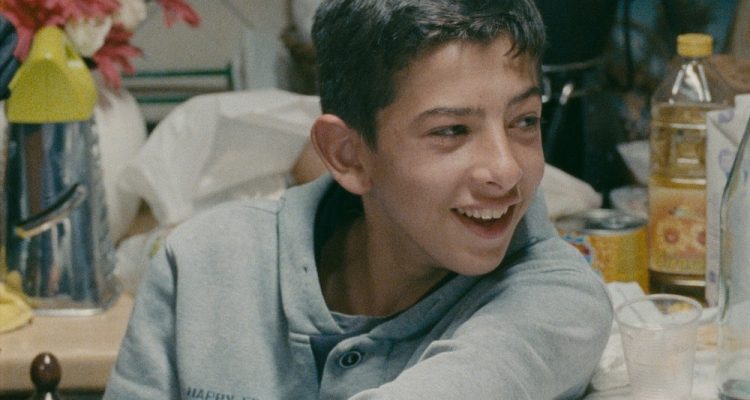In the thickets of the art-house, a wonderful cinematic universe has blossomed, one that doesn’t involve Marvel superheroes. Expanding his 2014 award-winning short into a full-length feature, “A Ciambra” sees Jonas Carpignano continue to survey Romani life in the tiny Italian neighborhood of Gioia Tauro, through the eyes of Pio (portrayed by non-professional teen Pio Amato). We last saw Pio make a cameo (and almost steal the entire show) in Carpignano’s previous feature, “Mediterranea,” the story of Ayiva (Koudous Seihon), an immigrant from Burkina Faso who ends up in Italy and meets Pio for the first time. With his latest, Carpignano ties his narratives together and enriches his cinematic tapestry through the strength of Ayiva and Pio’s unlikely bond, which is very much the heart and soul of this potent coming-of-age tale.
READ MORE: The 20 Most Anticipated Films Of The 2017 Cannes Film Festival
At the tender age of 14, Pio stands at the crossroads of adolescence, looking up to his older brother Cosimo and wanting nothing more in life than to prove to his entire family that he’s no longer a boy. In some places, this might mean getting a job waiting tables, or asking the girl you have a crush on at school to go steady, but in Ciambra (the local way Romanis call Cambria), the options are exceptionally slimmer. Following Cosimo around wherever his thieving path takes him, Pio takes the opportunity to step up and take care of his family when his brother and father get nabbed by the cops. Using his connection to the African community through his close friend Ayiva, Pio sets out to fill Cosimo’s shoes, face his fears and prove his mettle.
 It would be a disservice to continue writing about the plot for a film that so vibrantly lives and breathes through its atmosphere, characters and setting. Pio is very much a product of his harsh environment, which bursts into abundant life whenever the family gets together around the dinner table, or the boys go out for some drinks at the local bar/club and dance to some pop music. Carpignano’s obsession with Cambria’s colorful inhabitants and unpredictable rhythms transforms the neighborhood into a three-dimensional main character, even if we only see most of it during stark nighttime. Buoyed by Tim Curtin‘s neo-realistic, gritty and mostly hand-held cinematography, the ambiance of “A Ciambra” effortlessly pulls and locks you in its insular world of inconspicuous skid roads, train tracks and geographically ambiguous terrains. You may not feel like visiting the place any time soon, but boy, is it hard not to be utterly fascinated by its dynamism.
It would be a disservice to continue writing about the plot for a film that so vibrantly lives and breathes through its atmosphere, characters and setting. Pio is very much a product of his harsh environment, which bursts into abundant life whenever the family gets together around the dinner table, or the boys go out for some drinks at the local bar/club and dance to some pop music. Carpignano’s obsession with Cambria’s colorful inhabitants and unpredictable rhythms transforms the neighborhood into a three-dimensional main character, even if we only see most of it during stark nighttime. Buoyed by Tim Curtin‘s neo-realistic, gritty and mostly hand-held cinematography, the ambiance of “A Ciambra” effortlessly pulls and locks you in its insular world of inconspicuous skid roads, train tracks and geographically ambiguous terrains. You may not feel like visiting the place any time soon, but boy, is it hard not to be utterly fascinated by its dynamism.
And while this fascination grows, at times trying your patience because Carpignano seems slightly drunk on his own creative juices, the characters of Ayiva and Pio are the emotional bedrock. Amato and Seihon both have tremendous screen presence, and one particular scene with Ayiva refusing to take Pio back home on his motorbike and teasing him to take the last train is one of many stand-out moments. This genuine display of friendship and concern has a narrative purpose, of course, as it lays the groundwork for one hell of a gut-punching climax.

While it makes its point half-way into its running time and you start getting the anxious jitters of a film that overstays its welcome, “A Ciambra” serves the fundamental cinematic purpose of transporting you to another world. And it does so in a humble and humanistic way: the Amato family may have questionable morals, but you can’t help but feel that they had no choice in the way they live their life. You feel the distress of the matriarchal grandmother who is constantly worried, the wisdom of the grandfather who waxes about the olden days when he answered to no one but himself, the childishness of the five-year-old grandson who smokes cigarettes because the adults do it too. The strong sense of family and community within the Amato family unit and their neighboring African immigrants is what most likely drew Martin Scorsese in as an executive producer. This should hopefully guarantee that “A Ciambra” finds a theatrical home beyond film festivals, so that a wider audience can get to be transported to a different kind of cinematic universe — a rawer and more resonant one that opens your eyes to a tiny corner of the real world. [B]
Check out the rest of our coverage from the 2017 Cannes Film Festival by clicking here.

